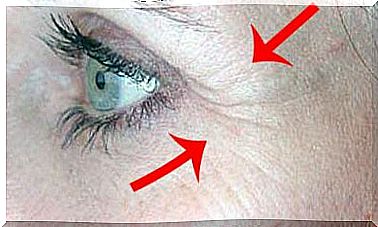Laryngitis: Causes And Symptoms
Laryngitis is a pathology that has multiple causes, ranging from lesions and trauma to infections of viral, fungal or bacterial origin. Either way, many of its varieties share the same symptoms.

Laryngitis is defined as inflammation of the laryngeal mucosa, the organ responsible for passing inhaled and exhaled air. This is the most special area for phonation as this is where the vocal cords are located.
This pathology is considered acute if one returns to a normal state after a short period of time (a few hours or days). If the symptomatology lasts more than three weeks, we will be dealing with cases of a chronic nature.
As we will see, laryngitis is a very common disease and, in the majority of cases, has a viral origin. It is for this reason that knowing its causes and symptoms is essential. Here we will introduce you to everything you need to know about it.
How is it distributed within the population?
Knowing the epidemiology of laryngitis, that is, the people it affects and its prevalence (the number of people infected in a given population) is essential to tackle it. Epidemiological studies provide us with a series of very interesting data:
- Acute laryngitis accounts for 15 to 20% of respiratory illnesses.
- Its incidence in children is 3 to 6%. This means that about 6 out of every 100 children under the age of 6 have this disease at some point.
- The typical profile of the affected person is a two-year-old boy who catches the disease in the fall and winter.
- Acute laryngitis has a clear familial component because, according to pediatric reviews, children with parents who have had it are three times more likely to present it.
As we have seen, we are faced with a pathology that predominates in childhood environments. This is because, up to the age of six, children have a higher glottis and more relaxed, less fibrous submucosal tissue. However, these factors predispose to infection.

Causes and symptoms
Research points to several causes that can cause laryngitis in the population. Here they are :
- Infectious : due to viruses (colds, flu, herpes), bacteria ( Mycoplasma, dyphteria) or fungi (candidiasis or aspergillosis).
- Non-infectious : laryngitis here comes from allergies, trauma, drugs or autoimmune disorders.
Viral laryngitis
According to studies, parainfluenza viruses 1, 2 and 3 are responsible for 65% of cases. Influenza A and B viruses (which produce influenza) and different types of adenoviruses are also causative agents.
These pathogens are associated with an infection of the upper respiratory tract, giving rise to clinical manifestations typical of influenza. Here are a few :
- Fever.
- Dry and sore throat.
- Dysphagia, that is, difficulty swallowing.
- Difficulty breathing and continued coughing.
- Inflammation of the lymph nodes in the neck.
- Ear pain.
These symptoms derive, in part, from the inflammation of the pharyngeal mucosa which is red and edematous, that is to say with an accumulation of extra-cellular fluid. The treatment is based on the patient’s vocal rest and the application of antithermics and analgesics.
In acute cases, this disease goes away on its own after a few days. The immune system fights the causative agent and there are no sequelae.
Bacterial laryngitis
The second in terms of importance. According to various bibliographic sources, this variant is also self-resolving and can be treated quickly, but that is not why we should not mention it.
The most common causative agents are bacteria of the genus Mycoplasma, which contains over 100 different species. The symptoms are very similar to those mentioned above: fever, non-productive cough, pain when swallowing food, and dysphonia (loss of the normal tone of the voice).
In these cases, the treatment to follow is based on the use of antibiotics. Erythromycin, clarithromycin or azithromycin are effective drugs for the elimination of bacteria in the larynx.
Non-infectious laryngitis
Some facts causing this disease may not be of pathogenic origin and not respond to microorganisms but to the environment around the person:
- By allergy: this is the acute inflammation of the vocal cords and the rest of the laryngeal mucosa after inhalation of allergenic agents. Symptoms are variable and range from coughing to severe airway obstruction.
- By inhalation: by direct contact of the tissue of the larynx with harmful elements such as smoke or very hot air. This type of laryngitis is very common in patients who have survived a fire or in firefighters.
- By trauma or vocal effort: irritation of the larynx occurs because of a blow or too much continuous effort of the vocal cords.

Laryngitis: what to keep in mind?
We have seen here that laryngitis is a polyfacetic disease because it has different causes ranging from infectious agents to simple lesions. However, there are common symptoms among all of these causes, such as dysphonia and the presence of a non-productive cough.
Since infectious variants are the most common, they are spread by direct contact or by inhalation of fluids across sectors of the population. They therefore appear with certain epidemiological patterns and this is why the peaks of laryngitis occur in winter and in autumn.
These respiratory pathologies are quite common in children. There is no need to worry as they tend to be self-limiting. However, if the symptoms last more than two weeks, seeing your doctor urgently is the best option.









